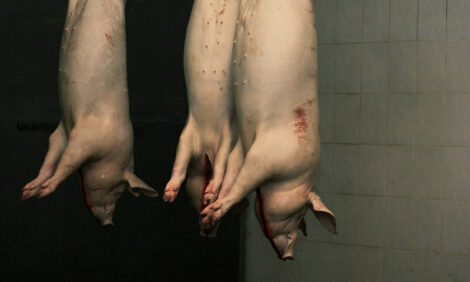



Study: Piggery Could Diversify Botswana Agri Sector
BOTSWANA - With the local and global demand for pork increasing, Botswana could have a stake in its production, according to a study released this week.Currently, the country is one of the big exporters of quality beef although trends show that the pig meat has been the world’s choice since 1976.
“Pork is the world’s leading choice meat and its demand will increase globally in the future as a result of the growth in its per capita consumption as well as the continuing growth in the world population,” Moses Galeboe of Local Enterprise Authority (LEA) said.
According to Sunday Standard, a study on pig products in Botswana by LEA has revealed that the annual national demand for pork products was 2, 417. 945 metric tones valued at P41.385 million.
However, there is a shortfall because the annual supply was estimated at 1, 758.919 metric tones at a value of P11.139 million.
“However, before the local producers can begin to target international markets, they still have vast opportunity domestically as there exists an annual shortfall of about 630.864 metric tones of pork products to satisfy the unfulfilled demand of the local traders,” added Mr Galeboe.
The study discovered that pork ribs (accounting to 36 per cent of the demand) are in high demand compared with other products, with hoteliers leading the pack. Most of the pork ribs were sourced from imports.
The study summary concluded that the piggery sub-sector can help in diversifying the agricultural sector and the general economy.
Agriculture contributes 3 per cent to GDP of the country and efforts were made by CEDA through Young Farmers Fund to promote the sector by tapping into the enthusiasm of Botswana youth.
From the study, it was established that the number of commercial farmers grew and it is dominated mainly by the adult male farmers while the women and youth who are LEA target groups are under-represented.
It also discovered that over 90 per cent of the farmers raise animals for pork production while specialisation in breeding is non existent.
“There is an opportunity in this area for LEA and other stakeholders to promote new entrants to fulfill this role to service the stocking needs of new farmers as well as existing piggery units in light of restocking or expansion,” the study suggested.
The study also found out that 89 per cent of the farmers target pork trading institutions while 11 per cent market their produce directly to individuals while only 15 per cent were able to market their products nationally.
“The farmers are individualistic in their marketing, which necessitates efforts of getting them to associate to be intensified,” it added.
It was recommended that LEA should continue to promote the development of piggery through cluster formation in the Southeast region to take advantage of the comparative advantage provided by business in the area.
LEA also undertook to work with the Ministry of Agriculture for the research on improved cheap pig feeds, which is one of the cost drivers for the farmers while simultaneously providing synergy with other development houses to train these farmers.
The study also recommended that the agency, headed by Dr Tebogo Matome, should sell the idea of creation of a pig produce futures market to the Botswana Pig Producers Association, which can possibly link the suppliers of inputs, producers and their wholesale and retail customers.
“This would also have the effect of a market based price regulating mechanism which will alleviate the problem of lack of negotiation skills to influence the produce prices as cited by farmers,” added the study.






